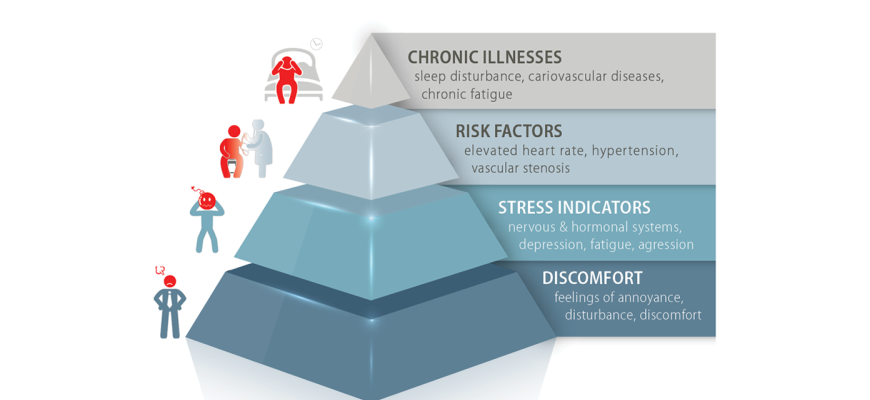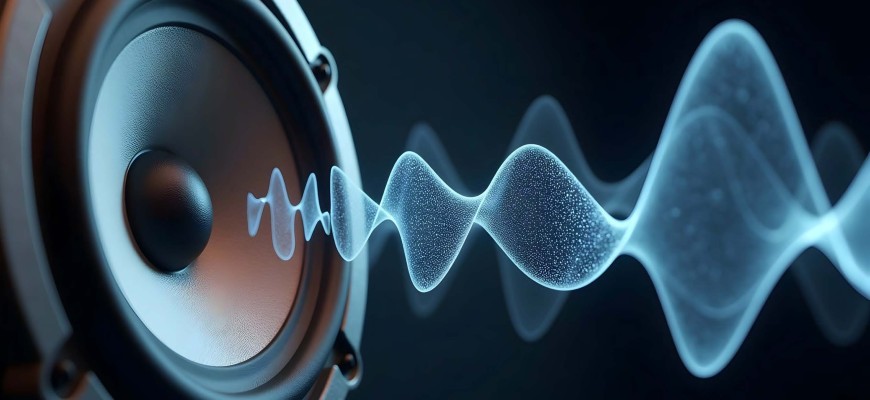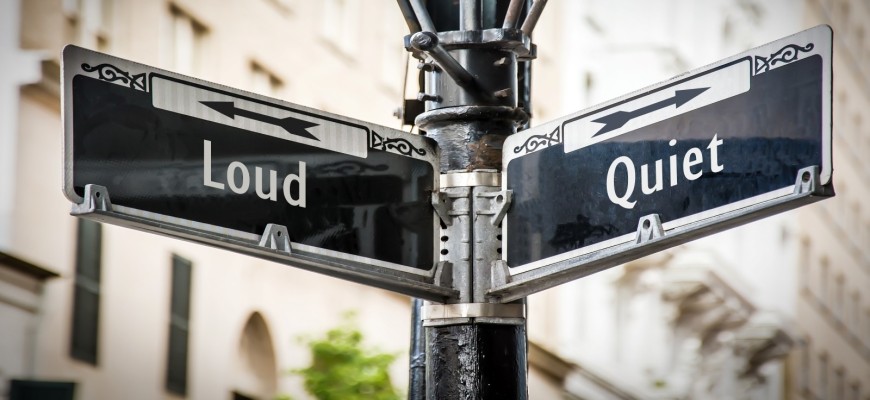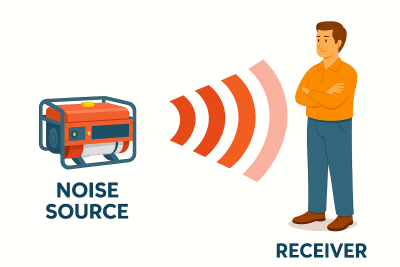
About Noise
What Is Noise? Why Does It Matter? How To Manage Noise?
Noise is more than just an unwanted sound - it’s a form of energy that can disrupt environments, reduce comfort, affect health, and compromise productivity. At Pyrotek, we specialise in acoustic and thermal solutions designed to mitigate noise across diverse industries including building, transport, marine, industrial, and oil & gas sectors.
Why Mitigate Noise?
With decades of experience in acoustic engineering, Pyrotek delivers tailored solutions using innovative materials and proven technology. Our R&D team continuously develops products that balance soundproofing, thermal insulation, and fire safety, helping clients achieve high-performance outcomes - from marine engine rooms to commercial offices.
Why managing noise is critical
- Protects health and wellbeing – long-term exposure to high noise levels is linked to stress, hearing loss, and fatigue.
- Improves productivity – reducing background noise improves concentration and communication, especially in workspaces.
- Enhances user comfort – whether in a home, hotel, vessel, or factory, quieter environments feel more refined and controlled.
- Meets compliance standards – many industries have strict noise regulations for environmental and worker safety.

Types of Noise
In technical terms, noise is a type of unwanted or excessive sound that can interfere with communication, work, or rest. It originates from various sources — machinery, vehicles, construction, HVAC systems, or human activity — and travels through airborne paths or vibrations through solid structures.
Types of Noise We Help Control
Airborne noise
Sound transmitted through the air, such as voices, engine and machinery noise, music, HVAC systems or traffic. Best controlled with absorbers within the environment and barriers to block transmission to other areas.
➤ Solutions: Acoustic absorbers, noise barriers, absorption panels, wall and ceiling treatments.
Structure-borne noise
Vibrations that travel through solid materials like floors, walls, or frames and vessel, train or other types of structures, creating structure-borne noise.
➤ Solutions: Damping compounds, isolation mounts, composite materials.
Impact noise
Noise caused by direct contact, like footsteps on flooring or hammering, common in multi-story buildings, multideck vessels etc.
➤ Solutions: Underlayments, resilient flooring systems.
Reverberation and echo
Reflected sound that can build up in enclosed spaces, impacting clarity of speech.
➤ Solutions: Ceiling tiles, acoustic absorbers and panels, bass traps.
Flanking noise
Noise that finds indirect paths around acoustic barriers, often overlooked in planning. One of the most challenging types of noise to control because it travels indirectly, bypassing traditional barriers by transmitting through connected elements like floors, ceilings, ductwork, and wall junctions.
➤ Solutions: Including acoustic solutions early on in design phase, decoupling methods, adding mass (e.g. Wavebar), sealing gaps, and isolating ducts or pipes, supplementing with acoustic absorbers and damping treatments like Decidamp where vibrations are a factor.

Acoustics 101
Decibels (dB)
The decibel (dB) is the standard unit used to measure noise. Originally developed by Graham Alexander Bell to simplify electrical resistance calculations, the decibel scale is now fundamental in acoustics. It works on a logarithmic scale, meaning sound levels increase exponentially. For example, a jump from 10 dB to 40 dB reflects a 10,000-fold increase in sound energy. This logarithmic approach is ideal for acoustics, as it compresses the wide range of sound intensities that the human ear can detect into manageable numbers.
Octave bands
Acoustic properties like sound pressure level and sound absorption coefficient are commonly measured in octave or one-third octave bands. In room acoustics, the standard octave frequencies are 125 Hz, 250 Hz, 500 Hz, 1000 Hz, 2000 Hz, and 4000 Hz. Each octave band represents a doubling of frequency and includes three narrower one-third octave bands for more detailed analysis.
Frequency
Frequency refers to the number of sound wave cycles per second, measured in Hertz (Hz). For instance, a sound vibrating at 500 Hz completes 500 cycles each second. The human ear can typically perceive frequencies between 20 Hz and 20,000 Hz. Frequency is perceived as pitch—lower frequencies (e.g., thunder) sound deeper, while higher frequencies (e.g., a mosquito buzz) sound sharper.
A-weighting
A-weighting is a filtering method applied to measured sound levels to reflect the sensitivity of the human ear, which is less responsive to low-frequency sounds. The A-weighting curve is widely used in environmental noise measurement and built into most professional sound level meters. For example, to sound equally as loud as a 1000 Hz tone, a 50 Hz tone must be amplified by approximately 30 dB.
Sound power
Sound power is the total acoustic energy emitted by a source per unit of time. It is the root cause of sound, while sound pressure is what we perceive. Just as a heater emits heat (power) and raises the room temperature (effect), a sound source emits power that creates sound pressure in its environment. Unlike sound pressure, sound power is independent of surroundings and provides a consistent measure of a source's acoustic output.
Sound pressure
Sound pressure is the variation in air pressure caused by sound waves and is what we actually hear. It depends on the distance from the source and the characteristics of the surrounding environment, such as room size and surface absorption. Because of this variability, sound pressure alone is not a reliable indicator of how noisy a source is. Sound power offers a more accurate, environment-independent measure of a source’s noise level. (Source: Brüel & Kjær)
Sound intensity
Sound intensity measures the acoustic energy flowing through a unit area (W/m²). It reflects both the magnitude and direction of energy transfer, making it a vector quantity. Intensity is useful in determining not just how much energy is being transmitted, but also where it’s going.
Outdoor noise propagation
In open environments, sound radiates outward from a point source in spherical wavefronts. As distance increases, the same amount of energy spreads over a larger area, reducing the perceived sound level. With every doubling of distance from the source, the sound level decreases by approximately 6 dB. This phenomenon explains why distant sounds are quieter even if the original sound power remains unchanged.
Combining sound sources
When combining two sound sources, their total noise level doesn't simply double. Because decibels are measured on a logarithmic scale, sound levels must be combined using logarithmic calculations rather than simple addition.
Perceived loudness
Loudness is the subjective perception of sound strength by the human ear. A common rule of thumb is that to perceive a sound as twice as loud, its intensity must increase by a factor of ten.

Basic Principles of Noise Control
Source: The source of a noise is what is creating a noise nuisance. Ideally, this is the area that should be considered for treatment first when trying to control a noise problem.

Receiver: The receiver of noise may be a person or room or even a whole community in the case of aircraft noise. In some cases treating the receiver may be the only noise control option, but it is by far the most complex and expensive.
A barrier's ability to insulate against noise is best explained with a transmission loss curve. It shows how a barrier attenuates noise at different frequencies. Transmission loss of a barrier can be simplified to four rules, which are shown in the diagram.
Coincidence dip is caused by high frequencies, which create bending waves that travel longitudinally along a wall or panel. The wavelengths of bending waves match those created at one frequency (the critical frequency). Waves of different frequencies travel at different speeds, for every frequency above a certain critical frequency, in an angle of incidence for which the wavelength of the bending wave can become equal to the wavelength of the impacting sound in air. This condition is known as coincidence. When coincidence occurs it gives a far more efficient transfer of sound energy from one side of the barrier to the other, hence the coincidence dip occurs at the critical frequency.
